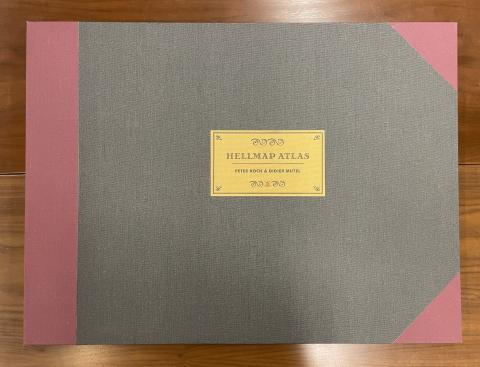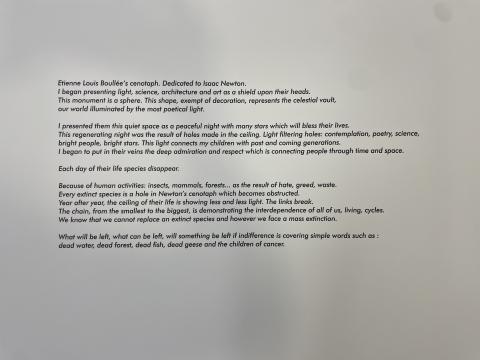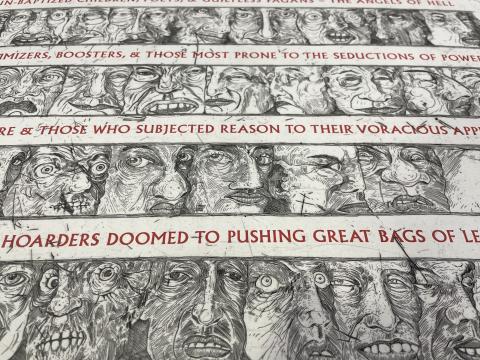Written by Adrian Vaagenes

The Booth Family Center for Special Collections is constantly growing, not only through the generous donations from alumni, but also through the purchases of our special collections librarians and curators. When evaluating items for purchase, we take into consideration how potential acquisitions might be used in teaching. Every year, the Booth Family Center hosts dozens of workshops in our classroom, partnering with faculty from across the University to facilitate their curriculum through the use of our special collections. We are always looking for items that might help us tell the story of a particular time period, literary movement, historical event, or scientific discovery. We are especially interested in those items that can provoke or inspire across multiple fields and time periods.
Recently, we purchased a multifaceted work that resonates across a number of disciplines, with allusions to Dante, Newton, Boccaccio, World War I, environmental and labor history, and climate change. The work, “The Hellmap Atlas” is a joint production by Peter Rutledge Koch, the author and printer of the text, and Didier Mutel, the engraver and printer of the etchings. The collaboration was printed specifically for Earth Overshoot Day 2022, the day that year when humanity’s demand on nature exceeded its capacity.
The work invokes a number of genres–a cenotaph, an atlas, a landscape–each of which serve to orient the viewer to the different dimensions of the work. The title page begins with an oversized bold, spare, poem that serves as a stark vision of ecological destruction: “Dead Water, Dead Forest, Dead Geese and, The Children, Oh the Children of Cancer.” This title page is followed by a reference to the 18th century French architect Étienne-Louis Boullée, who designed a memorial to Isaac Newton, though never built. The planned building was essentially a large hollow sphere punctuated with small holes in the ceiling to create a night sky effect within the interior. Mutel and Koch use the building as a metaphor for the loss of meaning and connection, as each species-- or star in the sphere–is “obstructed” or lost due to human “hate, greed, and waste,” resulting in a world darkened by the species’ absence.


The work culminates in a giant four page spread, “The Hellmap Atlas,” which outlines the levels of a Boccaccio-inspired Dantean hell. On each level grotesque and desiccated faces grin, smirk, and snarl, with a growing intensity of deterioration as the levels descend. Each layer is rimmed by blood red text , describing the particular denizens of each level and the chaos inflicted upon them by their own peculiar sins. Unlike Dante’s Inferno, whose horrors can be read as the exteriorized psychological representations of specific sins and their consequences, Koch and Mutel’s hell is more ecological, tying habits of greed to environmental catastrophe. One line in particular drives this connection home: “Greedy avaricious hoarders doomed to pushing great bags of leaden coin - chaos of the poisons, lead, cyanide leach, arsenic, mercury, plutonium.”


The map is framed on all sides by a larger text which draws the hellscape out of mythos into a particular moment in US history. The text is a diatribe upon the investors who profited from the 1917 Speculator Mine disaster, a tragedy in which 168 miners lost their lives while extracting copper for ammunition to be used by US forces in World War I, and includes a list of each miner’s name. The text stretches the bounds of hell beyond this historical moment to judge the contemporary world as every bit as enslaved to greed and power ultimately resulting in our own ecological and political nightmare. If a sermon of hellfire and brimstone could be made into an atlas, this would be it.
The Hellmap Atlas is a thought provoking work, to say the least, and I’m happy to say that it has found a home in class workshops across disciplines, sparking conversation and facilitating new connections.
